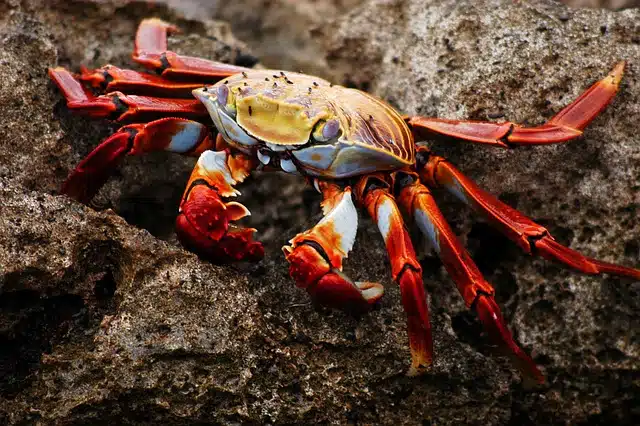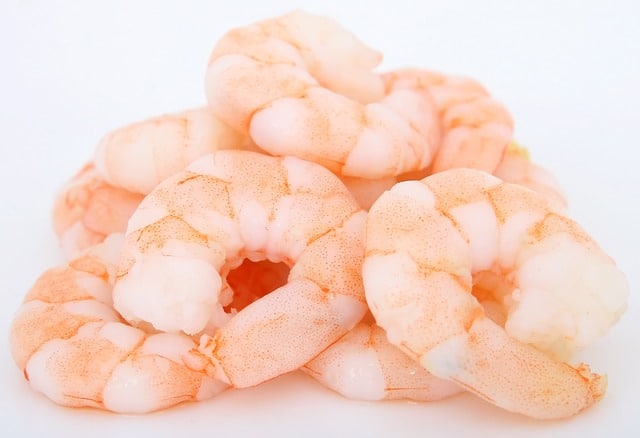
Crustaceans are arthropod animals whose body is covered by a shell.
Crustacean , from the Latin crusta ( "crust" , "bark" ), is a class of gill- breathing arthropod animals , which have two pairs of antennae and a variable number of appendages and are covered by a generally calcified shell .
Crustaceans constitute a subphylum of arthropods . There are more than 67,000 species of crustaceans, such as crabs , shrimp , lobsters and prawns . Most crustaceans are aquatic, living in fresh and salt water and at all depths.
Characteristics of crustaceans
All crustaceans share certain anatomical characteristics, although their size varies greatly. The bodies are composed of various segments or metamers that are usually part of three body regions: the cephalon (head), the pereion (thorax) and the pleon (abdomen). The first segments of the thorax may join the head forming the region known as the cephalothorax .
Crustaceans usually constitute a fishing and food resource appreciated by many. Shrimp, for example, are consumed almost all over the world . Typically, they are eaten cooked and without the head, shell, fins and intestines. Shrimp omelet , shrimp cocktail , shrimp chupe and shrimp rice are some of the most popular dishes made with this crustacean.
Prawn is another crustacean that is consumed as food in various regions of the planet. Your body is a source of vitamins B and D and minerals such as phosphorus, iron and iodine. Prawn cocktail , prawn skewers and prawn ceviche are among the recipes that can be made with the crustacean.

Prawn is a widely consumed crustacean.
rare species
Below are some of the rarest crustaceans in the world:
skeleton shrimp
This crustacean, whose females poison and devour the males after mating, has a very particular physical appearance, similar to that of a translucent skull. It has an elongated body, which firmly attaches to various surfaces, including algae, sponges and corals, so that its prey does not detect its presence in time to escape its claws. It is worth mentioning that human action has forced this species to change habitat on more than one occasion.
Pea crab
It is a type of parasite belonging to the pinnotheridae family, which lives in the bodies of oysters, sea cucumbers, clams and sea squirts, among other animals, and consumes a percentage of its host's food. Physically, it is characterized by having a soft and delicate shell.
Remipedios
At first glance, the crustacean of the remipedia class resembles a centipede, so much so that it also has a series of protuberances that it uses to inject venom into its prey. It usually lives in saltwater aquifers and underwater caverns, which makes it a difficult animal to spot.
whale louse
Also called cyamid, it is the largest arthropod ever discovered and spends its entire life on the body surface of whales and porpoises, clinging to their scars and wrinkles. It should be noted that it does not cause any type of damage to its host; On the contrary, they feed on their dead skin, as well as algae. Although it may not be noticeable to the naked eye, it belongs to a branch of the skeleton shrimp family that does not hunt to survive.
anchor worm
This name corresponds to various families of copepod crustaceans (small ones that live in the sea or fresh water and are part of the plankton). When they reach maturity, their physical appearance does not seem to bear any relation to that of an arthropod and they are usually seen in the company of other invertebrates or even fish.
